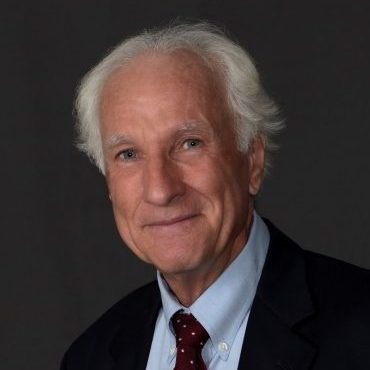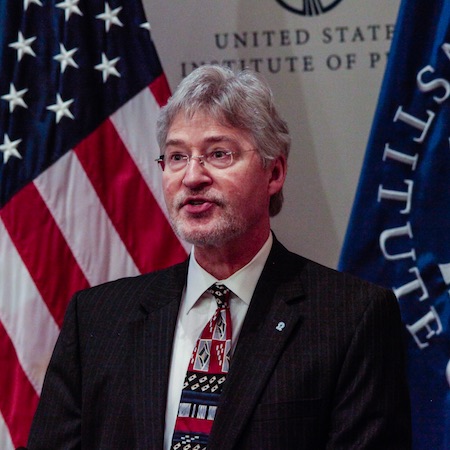After months of anticipation, the just released draft paper Return on Investment Initiative to Advance the President’s Management Agenda: Unleashing American Innovation signals that the Administration is serious about addressing a wide range of long neglected issues undermining effective technology commercialization. The paper, generated under the leadership of Commerce Under Secretary Walter Copan, who heads the National Institute of Standards and Technology (NIST), is “a discussion document” based on feedback from a series of public meetings and written comments for improving the return on investment from $150 B spent annually on government-supported R&D.
Many of the respondents cited the weakness of the patent system as a significant barrier to innovation. While patent reform is outside the scope of the document, it pledged to transmit suggestions like these to the Patent and Trademark Office:
- Consider “changes to the Patent Trial and Appeal Board Proceedings, particularly around Inter Partes Review” because of perceptions the system discriminates against patent holders and discourages investment;
- Address concerns that IPRs deny due process to patent owners while exposing patent claims to inconsistent standards of review between the PTO and Article III proceedings;
- Recognize that the inability of patent owners to secure injunctions against unauthorized sales of their inventions, even after they prevail in court, erodes faith in the system;
- Clarify the scope of patent eligible subject matter based on the America Invents Act and Supreme Court rulings; and
- Restore the right of patent owners to sue for damages if they are subjected to false evidence or other abuse in reexaminations.
The report’s focus is on improving the federal technology transfer system. The most serious threat comes from claims that the Bayh-Dole Act allows the government to “march in” to license competitors if products developed under the law aren’t “reasonably priced.” The paper summarizes the resulting debate before rejecting this theory, but some additional background might be helpful.
Bayh-Dole permits grantees and contractors to own inventions made with government support. R&D partnerships between academic institutions and industry helped make the U.S. the undisputed world leader in the life sciences. But these alliances would end if agencies began granting licenses to competitors because someone thinks a resulting drug’s price isn’t “reasonable”– a term that’s completely arbitrary.
Bayh-Dole seeks to insure that diligent efforts are being made to commercialize federally-funded inventions and that they will be available to meet national emergencies. If that doesn’t happen the law authorizes funding agencies to “march in” requiring that additional licenses be granted under four triggers.
The first, where the debate centers, is when the “action is necessary because the contractor or assignee has not taken, or is not expected to take within a reasonable time, effective steps to achieve practical application of the subject invention…” (emphasis added). The definition of “practical application” includes that the invention is “being utilized and that its benefits are … available to the public on reasonable terms.”
This trigger applies to the patent owner, not the licensee.Under Bayh-Dole the patent owner is most likely an academic institution. They can license their inventions on reasonable terms conducive to “practical application” but don’t determine how resulting products are priced.
The other triggers apply to patent owners and licensees, specifying that the government can march in if they are unable to meet health, safety or public use needs required by Federal regulations. Agencies can also march in if the licensee violated their pledge to substantially manufacture the product in the U.S. When the triggers are met, the agency can compel the patent owner to grant additional licenses “upon terms that are reasonable under the circumstances.”
The intent of the march in provision is ensuring that good faith efforts are being made so federally supported inventions are commercialized and made available for public use. Bayh-Dole says nothing about how products are priced.
The law worked as intended for eighteen years before critics claimed that the phrase “available to the public on reasonable terms” meant that products must be “reasonably priced.” This view was immediately denounced by Senators Bayh and Dole who pointed out that commercialization, not price control, is the intent of the law. The report highlights the Senators’ statement.
Sen. Bayh said Bayh-Dole would have to be amended before it could regulate prices. Lawmakers would also need to define a “reasonable price” understanding this would apply to any product, not just drugs. Wisely,
Congress has shown no inclination to do so.
Nevertheless, critics have repeatedly filed petitions with the National Institutes of Health asking it to march in to lower the price of successfully commercialized drugs arising from its extramural R&D. Each petition has been appropriately denied despite considerable political pressures having been brought to bear on NIH. However, the specter that someday it might break under constant hammering hangs over the system.
The report’s “intended action” would end this threat by clarifying in Bayh-Dole’s regulations that “the intent of reasonable licensing terms” are “to allow a product or service to reach the marketplace but not as terms (i.e., price control mechanism) for consumer use.”
The paper also makes important recommendations for improving technology commercialization in the federal laboratory system. One of my favorites is titled Managing Conflicts of Interest. This issue has the government tied up in knots. The report deftly summarizes the problem: “Generally, universities manage the potential for conflict of interest, while most Federal agencies prohibit the potential to exist.” Whoever wrote that has a wry sense of humor. The suggested action is to “authorize scientists and engineers at Federal Laboratories to engage in entrepreneurial activities that support technology transfer and commercialization.” About time!
The report discusses changes so the technology transfer laws are administrated uniformly like simplifying the waiver process when universities are unable to find a licensee capable of making a resulting product in the U.S. It recommends developing a simplified, interagency system for reporting inventions made with federal support.
The document addresses needed statutory changes such as allowing “agencies to register a copyright to establish protection for the commercialization of ‘software’ that are products of R&D for which the Federal Government has a right, title, or interest.” It suggests establishing clear, consistent procedures protecting trade secrets of companies involved in government R&D partnerships and extending the protection of such information generated in CRADAS (cooperative R&D agreements) from 5 to 10 years.
Another idea is making the Department of Commerce the oversight agency for the Stevenson-Wydler Act, which authorizes agencies to perform CRADAS. Currently there is no lead agency so implementation is inconsistent across the government.
Other recommendations include narrowly defining the scope of the government’s royalty free license to use inventions it funds, clarifying how government employees assign inventions to their agency, streamlining and expanding partnership mechanisms with industry, allowing SBIR/STTR funds to be used for technology maturation, expanding technology entrepreneurship programs, making the reporting of IP data and information on federal programs more efficient and accessible, and improving benchmarks and metrics for R&D management and impact.
The report effectively addresses a wide variety of problems in the system. Many have lingered for decades but the government lacked the leadership and the will to address them. It looks like that may be ending. That’s a good thing for American taxpayers.

![[IPWatchdog Logo]](https://ipwatchdog.com/wp-content/themes/IPWatchdog%20-%202023/assets/images/temp/logo-small@2x.png)


![[Advertisement]](https://ipwatchdog.com/wp-content/uploads/2024/04/UnitedLex-May-2-2024-sidebar-700x500-1.jpg)
![[Advertisement]](https://ipwatchdog.com/wp-content/uploads/2024/04/Patent-Litigation-Masters-2024-sidebar-700x500-1.jpg)

![[Advertisement]](https://ipwatchdog.com/wp-content/uploads/2021/12/WEBINAR-336-x-280-px.png)
![[Advertisement]](https://ipwatchdog.com/wp-content/uploads/2021/12/2021-Patent-Practice-on-Demand-recorded-Feb-2021-336-x-280.jpg)
![[Advertisement]](https://ipwatchdog.com/wp-content/uploads/2021/12/Ad-4-The-Invent-Patent-System™.png)






Join the Discussion
4 comments so far.
Pro Say
December 12, 2018 06:41 pmThe absolutely best way to unleash American innovation?
Remove the Alice / Mayo innovation-choking leash.
Silence Dogooder
December 12, 2018 10:32 am“R&D partnerships between academic institutions and industry helped make the U.S. the undisputed world leader in the life sciences. But these alliances would end if agencies began granting licenses to competitors because someone thinks a resulting drug’s price isn’t “reasonable”– a term that’s completely arbitrary.”
…
“The report discusses changes so the technology transfer laws are administrated uniformly like simplifying the waiver process when universities are unable to find a licensee capable of making a resulting product in the U.S.”
I agree that the term “reasonable” is completely arbitrary, but the terms “unable” and “capable” also seems just as arbitrary.
Seems the waiver process could be just as detrimental as arbitrarily granting licenses.
Craig
December 12, 2018 07:45 amNice write up. I generally agree with Ternary above, and would extend to note that addressing patents is actually not really salient when it comes to realizing better returns from federal labs. Maybe Bayh-Dole and universities, but not federal labs, as there are important differences between the two. The big fed lab elephant-in-the-room issues are still: 1) overbuilt bureaucracies leading to looooong inefficient transactions, and 2) licensing rates far lower than academic counterparts. Addressing the COI problem that feds currently have may positively affect the numbers a little, but to truly get a better gauge of ‘return on investment’ agencies need to report how much they are spending on their tech transfer bureaucracy (eg, ORTA, patenting, etc) and the time it takes to transact.
Ternary
December 11, 2018 03:46 pmAccording to the report, the US Government annually spends $150 billion in R&D. Some is practical, applied to somewhat well defined problems. Some is fundamental in nature. In the past I was directly involved with “technology transfer.” What strikes me in this report is that most of the problems are still the same as the ones decades ago.
Four issues caught my eye:
1) no independent inventor appears to be on the committee or organization that wrote this report;
2) it is unclear how an independent inventor struggling with a technical problem, can review what the US government has in available technology accessible to an independent inventor. It still seems that R&D funds are made available by the government to companies/institutions that submit a proposal. While very good, it is not really technology transfer.
3) the underlying concern which jumps out, is with march-ins, especially as it relates to potentially highly profitable R&D, such as in drug development;
4) the report wants government institutions to be more entrepreneurial. It may be a good idea, but the nature of many researchers in government is solving problems and doing research. The report should have focused (in my opinion) how government R&D can be easily identified and made available to entrepreneurs to start a new business.
It is not a bad report. But with 5 strategies and 15 proposed actions it seems heavy handed with little chance to successfully implement even a minority of the proposals. The subtitle “… unleashing American innovation” has a known solution that we all know and that has been extensively documented: allow entrepreneurs to make money. It is really as simple as that.